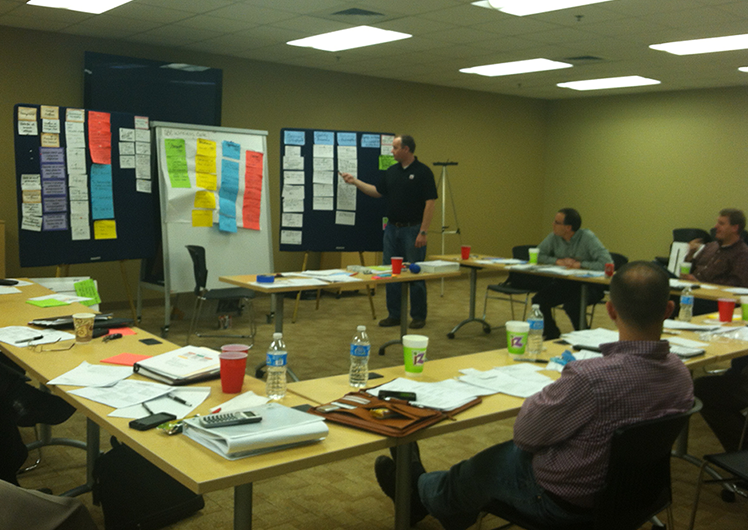Fence Post Mentors

“I’m just a turtle on a fence post. And if you ever see a turtle sitting on the fence post, you know it had a lot of help getting up there.”
Sunday, January 17, was the official International Mentoring Day. It happens the same day every year. I hope you aren’t as surprised as I am to learn about this day, which is a keen reminder that none of us get to where we are alone. Learning about this day made me think about those larger-than-life advisors in my life who took time to share a bit of themselves and nudged me up and along so I could get a view of a better direction.
“If I have seen further, it is because of standing on the shoulders of giants.” – Sir Isaac Newton
No Shoulders to Stand On
Last week I began a new coaching assignment with a very talented and well-educated manager, a man in his late thirties struggling to move up in his organization. Within minutes into our initial conversation, it was apparent why we were talking when he confessed, “I don’t have any mentors now, and I can’t think of any in my past.” Now, this may not have been entirely true, but when I heard him say this, I thought of the advice of someone I interviewed this past June. His name is Price Hightower.
Price is a successful businessman and strong community leader who gives full credit for his success to mentors in his life. When I spoke with Price on my podcast, he offered several insights to help anyone who feels their leadership or life is on hold or headed in the wrong direction. Price also shared some wisdom for anyone who wants to become a better mentor. You read his favorite mentoring quotes in the first line of this article. Following are three mentorship ideas he shared with me, in his own words:
Three Ideas
Cut and Paste –”I might seek out a person who is good at raising a family and maybe their kids are ten years older than mine so that I can learn the way that they have raised successful kids. But that person may or may not run a business life that I want to emulate. I might find another mentor who has a great business career, but maybe his family life does not run as well. So, I sort of use a cut-and-paste mentality as I have chosen my mentors.”
Slow Down and Look – “Actively pursue friendships with those who are younger and offer guidance to them. I am too busy and need to slow down enough to accept opportunities to pour into people, as my mentors have poured into me. Often the best way to get through a tough spot in your life is to help someone else get through their tough spot. Everyone has both pain and dreams. You can see this if you stop and take a look in their eyes.”
Be Transparent –“The number one thing a mentor taught me by example – he was transparent with me. And he taught me that it’s okay to be transparent with other men, and probably the greatest gift a man can give to another man is the gift of transparency and just open, honest communication without trying to guard your ego.”
Seeking to learn from a mentor or becoming a better mentor begins and ends with the courage to be transparent by showing confidence in the person you are helping and having the humility to get your own goals out of your way. As Steven Spielberg said, “The delicate balance of mentoring someone is not creating them in your own image, but allowing them to create themselves.”
Journal Entry:
I’ve never seen a turtle on a fence post. I doubt that you have either, but we all get the metaphor. So, who are your fence post mentors? Why not send her or him a note or make a call to thank them before the end of this first month of 2021? If you don’t have a mentor or want to get better at being a mentor, is one of Price’s ideas worth considering to help you help others leadership and life?
To hear the Price Hightower Small-time Leaders podcast about “Mentoring,” which includes his story about “God does not waste pain,” CLICK HERE.
Leadership and Life Journal: A new way to look at the important things you already know. Subscribe to Leadership & Life Journal.

 I have helped a few non-profit organizations develop plans over the years. The ones that minister to homeless people, Gospel Rescue Missions, have been my favorites for over a decade. In December 2020, I was asked to write an article about strategic planning for a national association of these missions, who rescue people to recover from addictions to find a new life in Christ. Over time, I adapted my traditional planning approach to fit the needs of these purpose-driven places, which deal with more uncertainties, struggle with more complex “friendly” competitors, and have fewer resources than any real business out there.
I have helped a few non-profit organizations develop plans over the years. The ones that minister to homeless people, Gospel Rescue Missions, have been my favorites for over a decade. In December 2020, I was asked to write an article about strategic planning for a national association of these missions, who rescue people to recover from addictions to find a new life in Christ. Over time, I adapted my traditional planning approach to fit the needs of these purpose-driven places, which deal with more uncertainties, struggle with more complex “friendly” competitors, and have fewer resources than any real business out there.

